Venturers tackle three climbs near Oregon’s Mount Hood
No matter how strong you are, and no matter how tough you are, rock climbing will challenge you.
There’s an outward challenge — you against the rock, one handhold after the other.
And there’s an inner challenge — you against yourself, trying to find the confidence to go higher.
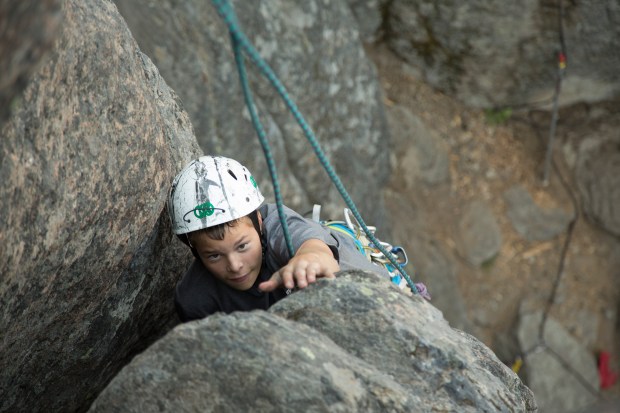
Some beginners show up with plenty of physical strength but no idea of what to do the first time they look down and realize they’re 20 feet above the ground.
Others show up with plenty of confidence but no idea of how much physical effort it takes to navigate their way up a wall of rock.
Mastering both is the only way to make it to the top. Like everything else, it takes practice.
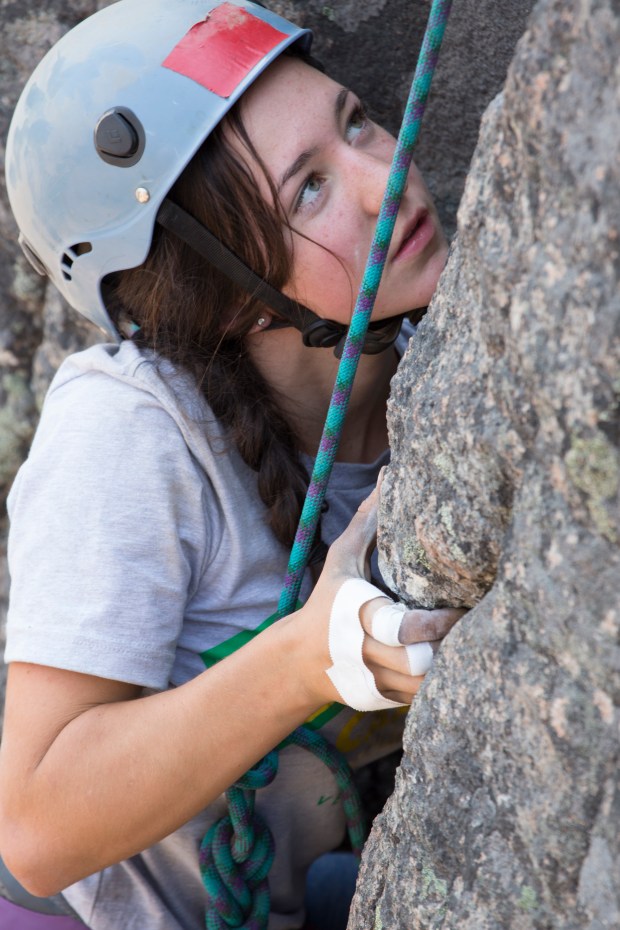
A FEELING THAT CAN’T BE RIVALED
The ones when you struggle and you aren’t sure you’re going to make it …” says 16-year-old Serena Baserman, a member of Venturing Crew 310 out of Seattle, Washington. “I can’t describe the elation you feel when you get to the summit.
“It’s a feeling that can’t be rivaled.”
The Venturers of Crew 310 know about rock climbing. They go on a climbing trip almost every month, during which they also camp and explore the outdoors.
As they recruit new members, the experienced climbers like Serena help the younger ones get over their initial fears. But sometimes, that’s easier said than done. The fact is, when you climb with the help of properly trained guides, you aren’t going to fall. There are ropes, harnesses and anchors designed specifically to prevent that.
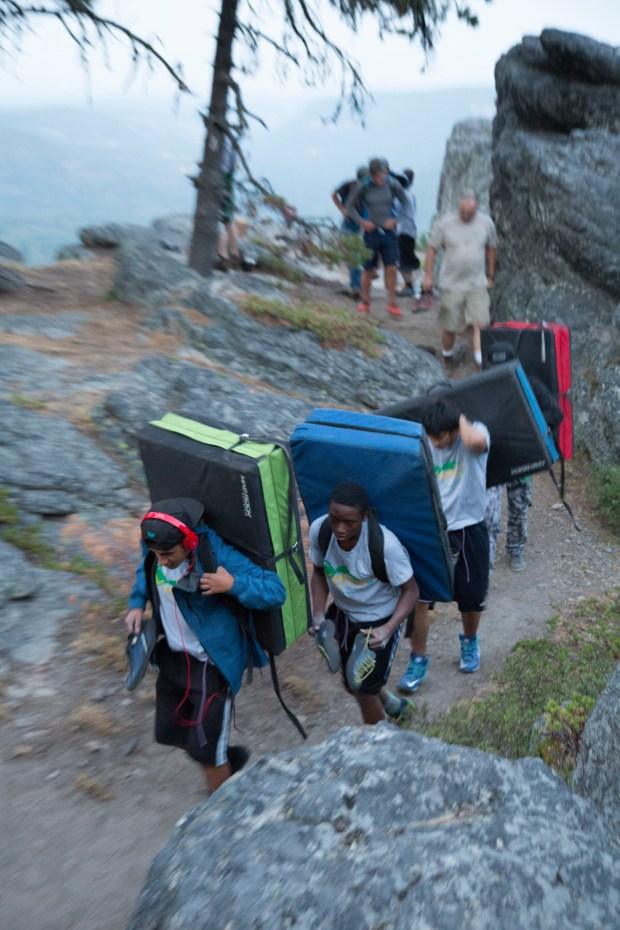
MOVING UP
On Crew 310’s climbing trip to Oregon last summer, the Venturers hit three spots near Mount Hood. The first two — Bulo Point and Trillium Lake — are perfect for novice climbers. The third — French’s Dome — is perfect for taking those newfound skills to the next level.
“One thing that surprised me was how quickly kids were learning,” says 15-year-old crew member Logan Stine. “Lots of new kids came in who have never climbed before, and they ended up loving it.”
At their first two stops, the Venturers learned how to secure themselves into a harness, and they learned how those harnesses are part of a system designed to prevent hard falls.
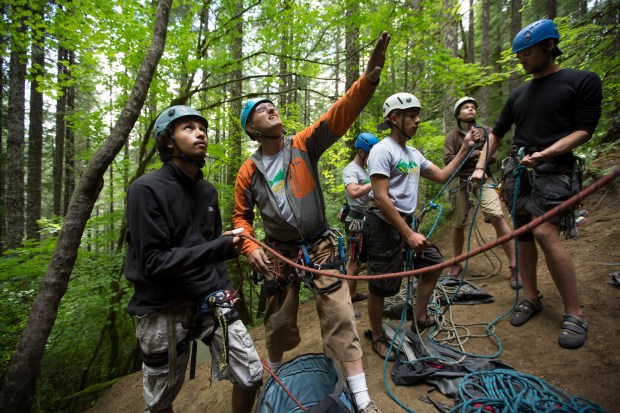
They learned not only how to climb, but also how to belay a partner. The belayer has the critical job of making sure the climber doesn’t fall very far by managing the rope connecting the two participants.
“I think the most difficult part of rock climbing for me is being OK with falling,” says 17-year-old Venturer Katie King. “It’s like you’re climbing a route and you stop to find your next handhold or foothold, and you look down and see you’re dangling 30 feet in the air.
“Your first instinct is to hold on and prevent falling at all costs. You really just have to trust the belayer to catch you and understand that it’s OK to slip up, literally.”
That’s the inner challenge for you.
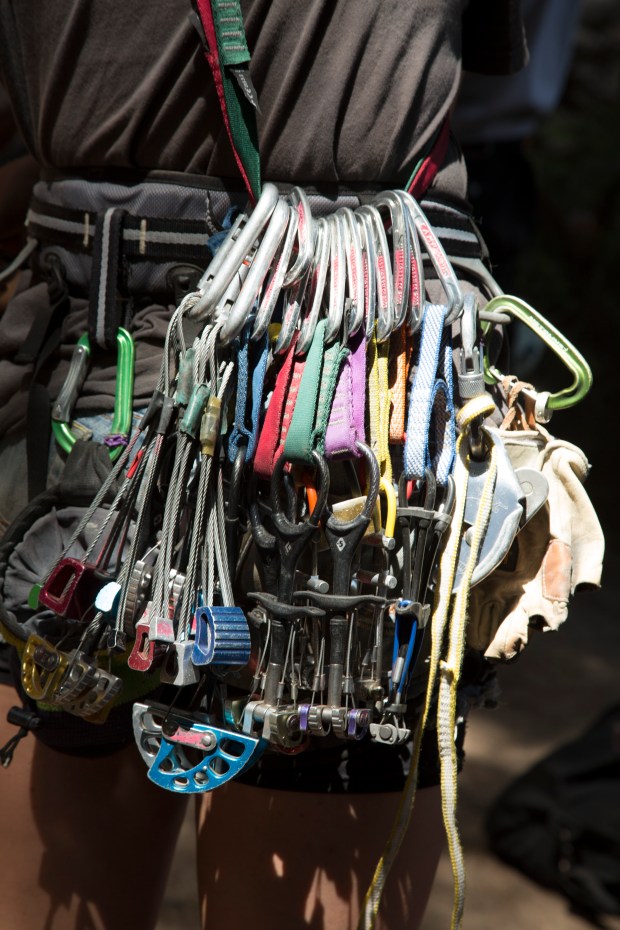
DIFFICULT TASKS AHEAD
The outer challenge is that you have to be strong enough to pull yourself up the rock with your arms and legs, one handhold at a time. Often a climber will take several seconds to scan the rock for the next step, looking for just the right nook or cranny to grab ahold of.
At French’s Dome, the Venturers tested themselves with a much more difficult experience. It’s called multipitch climbing, and it’s the only way to safely climb a peak that’s way too high for one length of rope.
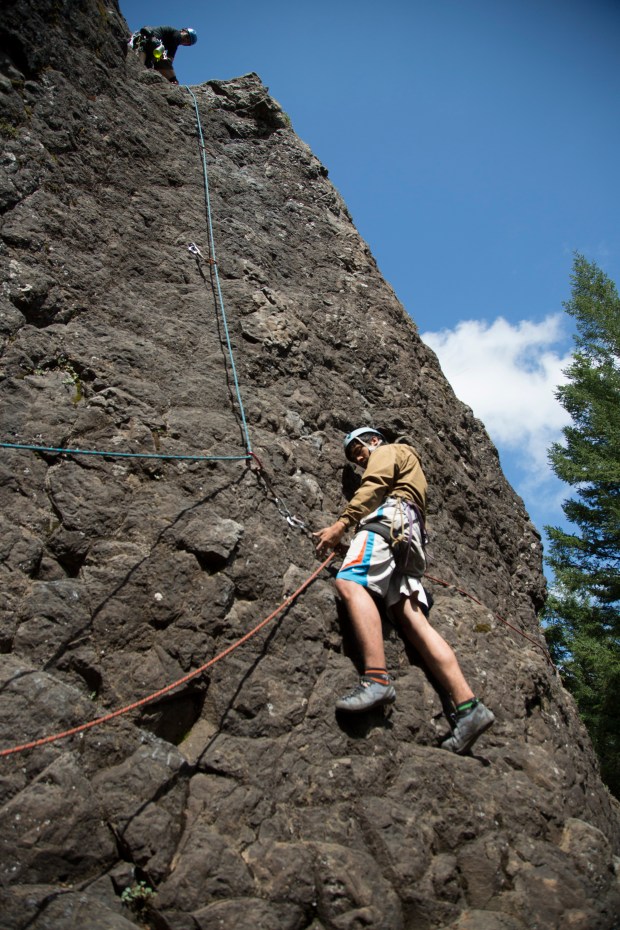
When you get to the top of one rope, you anchor yourself to a belay station. Then you unhook yourself from one rope and attach yourself to a second one so you can be belayed all the way up to the top.
Once the climber is secured to the second belay, it is safe to disconnect from the anchor.
“After a climb, you look up, and the thought of being able to say ‘I climbed that’ is great,” Logan says. “Knowing that you just climbed that vertical wall is amazing.
“It really shows what your body is capable of, and sometimes it inspires you to push yourself more.”
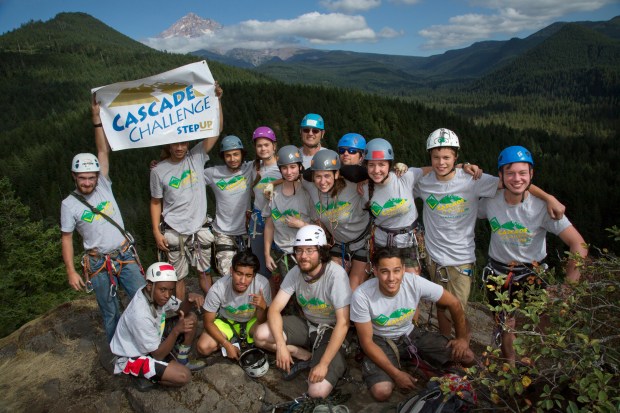
That cool, I go climbing too.
aaah yaaaah